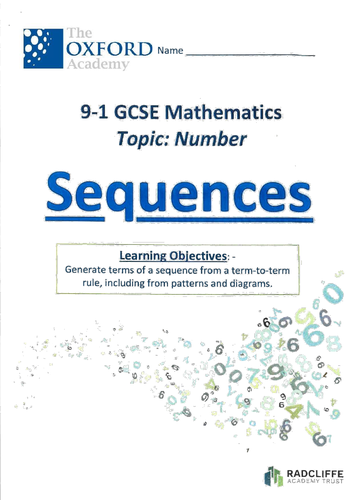
73Uploads
11k+Views
3k+Downloads
All resources

Audiences
A resource to teach about Audiences. Used for the BTEC Tech Award in Creative Media Products, Component 1

GCSE Problem Solving: "UNPACK" problems (Bundle)
This series of workbooklets provide GCSE exam questions for students to tackle using the “UNPACK” method.
U = UNderline important information about the question
N = UNderstand what the question is asking
P = What maths Processes will I be using?
A = My Answer to th questions
C = Have I Checked my work?
K = I Know my answer makes sense
The “UNPACK” booklet and PPT explains to students how to use this method, with examples, prior to them attmepting to use this method for themselves in:-
Problem Solving with Shape, Space and Measure
Problem Solving with Ratio and Proportion
Problem Solving with Probability
Problem Solving with Number
Problem Solving with Data and Statistics
Problem Solving with Algebra

Creating Change: The world I want to live in
**Creating Change: The world I want to live in
**
This PPT teaches students about Human Rights, focussing on discussion and debates around the Universal Declaration of Human Rights. The PPT conists of:-
An activity to discuss the Human Rights and what each right means
Video about the Human Right Act
Group discussion activities about Human Rights
Art activities
Letter writing activities

BTEC Tech Award in Creative Media: Component 1
A handbook and workbook for students to use for Component 1: Exploring Media Products.
It has activities which cover the learning aims for Component 1 preparing them for the first assessment task.

3D Shapes, Properties, Volume & Surface Area
Learning Objectives:-
• Identify the properties of 3D shapes including cubes, cuboids, cylinders, pyramids, cones and spheres.
• Know and apply formulae to calculate volumes of cuboids and other right prisms (including cylinders)
• Calculate the surface area of spheres, pyramids, cones and composite solids.

Area & Perimeter of Regular & Composite Shapes
Learning Objectives:-
Calculate the perimeter of shapes
Calculate the areas of Rectangles, Triangles and Parallelograms
Calculate the areas of Trapeziums, Rhombus and Kites
Calculate the area of composite shapes

Angles & Constructions
Learning Objectives:-
Know angle types, label triangle sides and angles
Apply properties of quadrilaterals to know their names and find missing angles
Apply the properties of angles at a point, angles on a straight line, vertically opposite angles, alternate angles and corresponding angles
Use the standard ruler and compass constructions to construct a 60° angle, a perpendicular bisector, a perpendicular to a given line from/at a given point, and an angle bisector

Circle Theorems
Learning Objectives: -
Apply and prove the standard circle theorems concerning angles, radii, tangents and chords, and use them to prove related results

Bearings & Maps
Learning Objectives:-
To find a bearing from A to B
To find a return bearing from B to A
To understand the points on a compass and the angles of each point
To use scale to work out distance from one bearing to another

Key Stage 3 Topic Booklets
Units of work for use with Key Stage 3 (or low-ability KS4) to boost basic mathematical and numeracy skills. Ideal for using in small groups or for intervention work.
Section 1: Number
Section 2: Mental Methods 1
Section 3: Mental Methods 2
Section 4: Square and Square roots
Section 5: Number Patterns
Section 6: Negative Numbers
Section 7: Fractions
Section 8: Perimeter, Area and Volume
Section 9: Basic Probability
Section 10: Ratio and Proportion
Section 11: Averages
Section 12: Types of Data and Representation

Circles
Learning Objectives:-
• Describe the parts of a circle, including tangent, arc, sector, segment, centre, radius, chord, diameter, circumference
• Recall and use the formula for the area & circumference of a circle
• Calculate arc lengths and the angles and areas of sectors of circles

Congruence & Similarity
Learning Objectives:-
Apply the concepts of congruence and similarity
Use the basic congruence criteria for triangles

Loci, Plans & Elevations
Learning Objectives:-
Use constructions to solve loci problems
Construct and interpret plans and elevations for 3-D shapes.

Properties of Polygons
Learning Objectives:-
Derive and apply properties of polygons (and know their names)
Correctly use geometrical terms, label triangle sides and angles and draw diagrams from written descriptions
Calculate interior and exterior angles in regular polygons
Identify lines or symmetry and rotational symmetry order

Pythagoras' Theorem
Learning Objectives:-
Know and use Pythagoras’ Theorem for right-angled triangles.




















